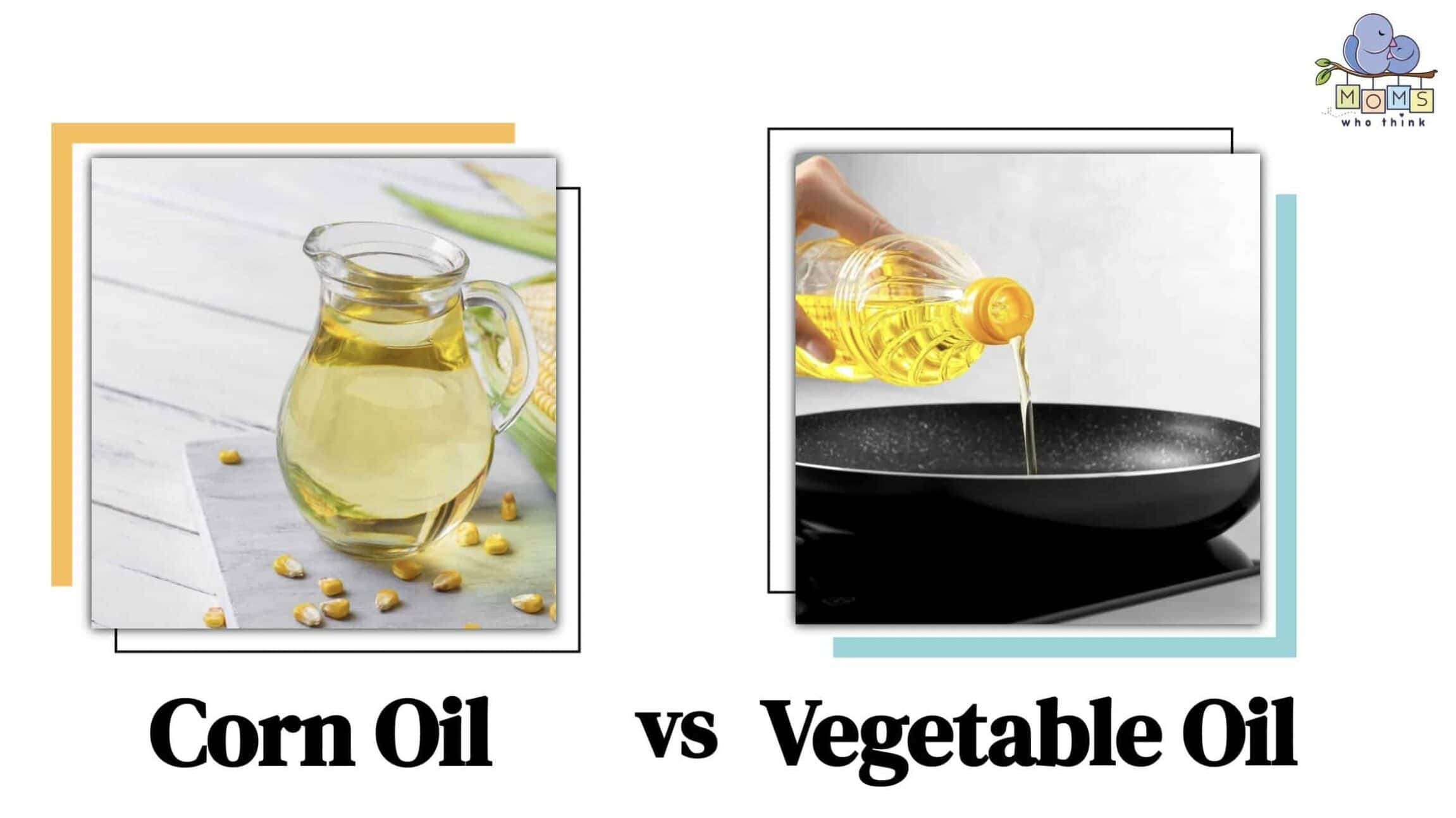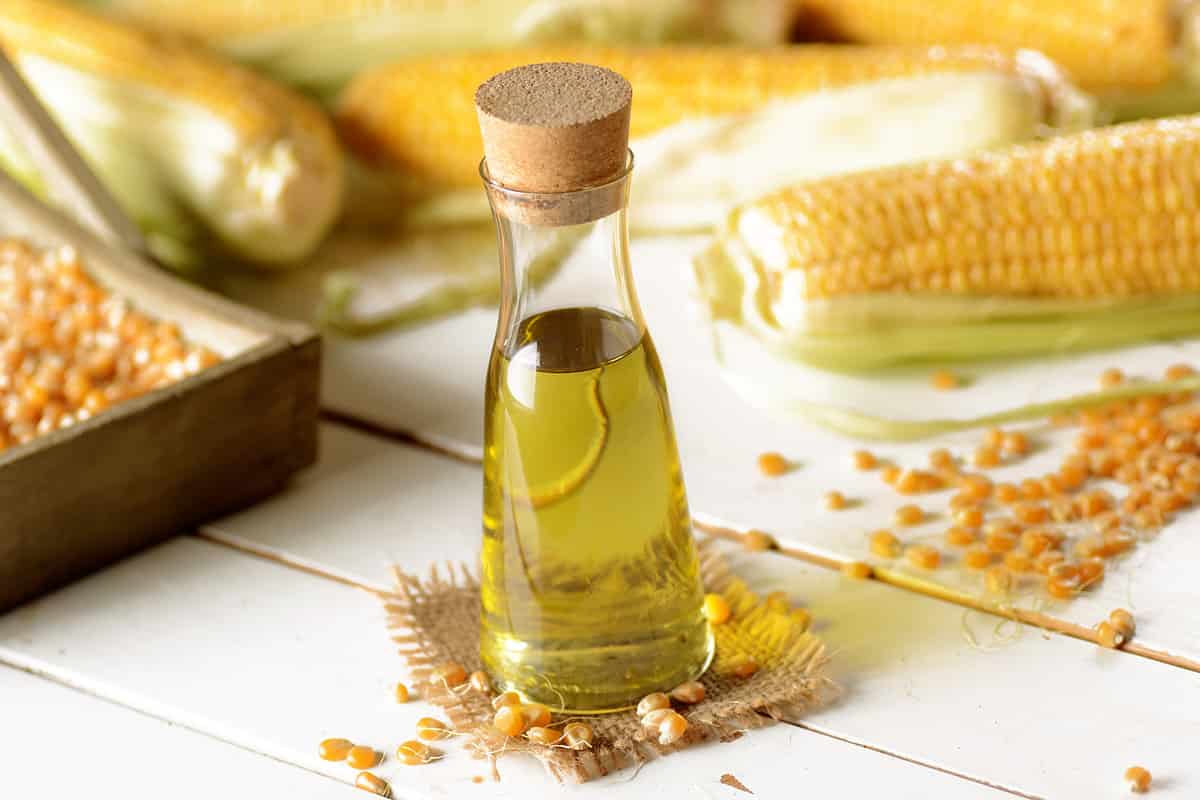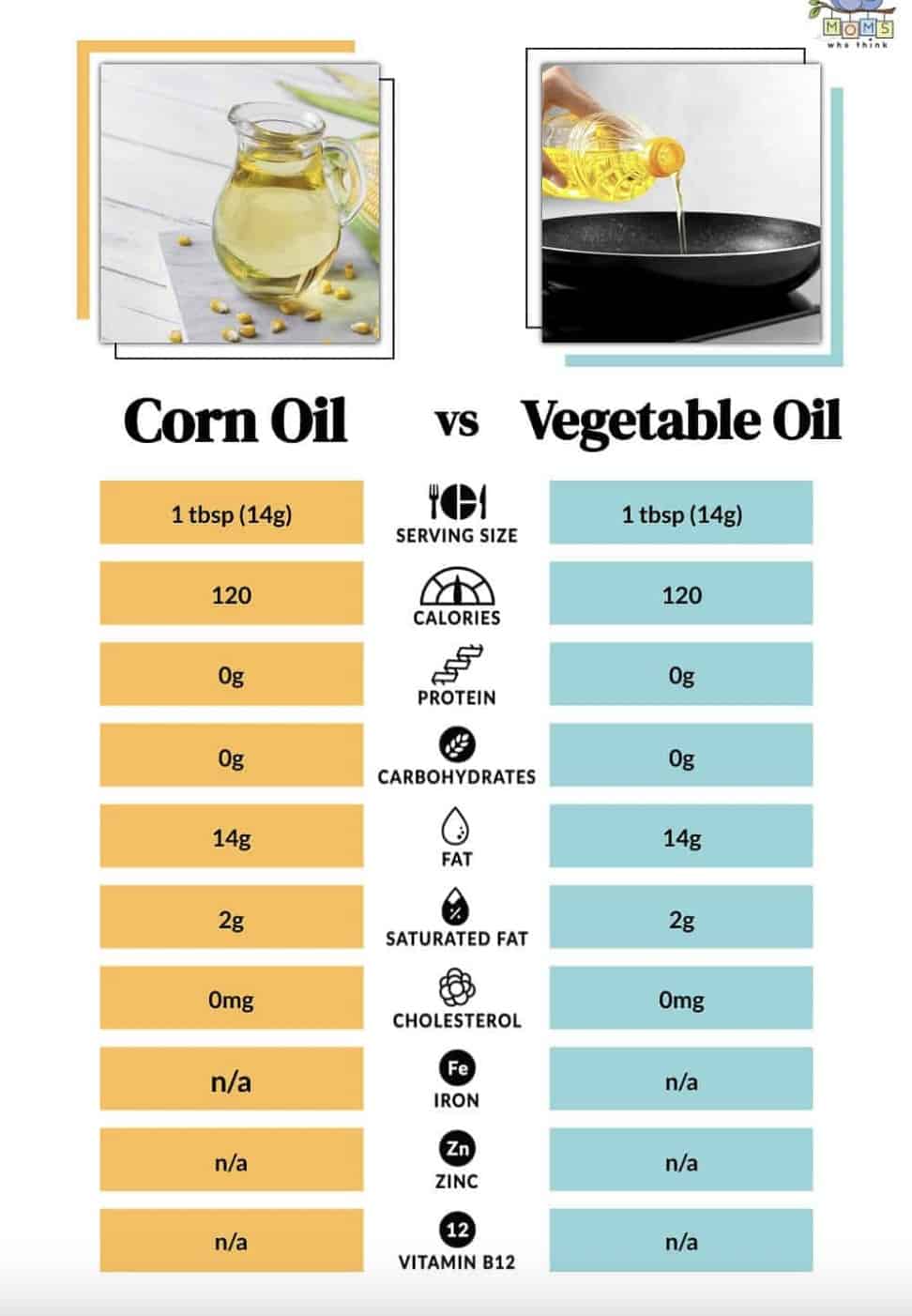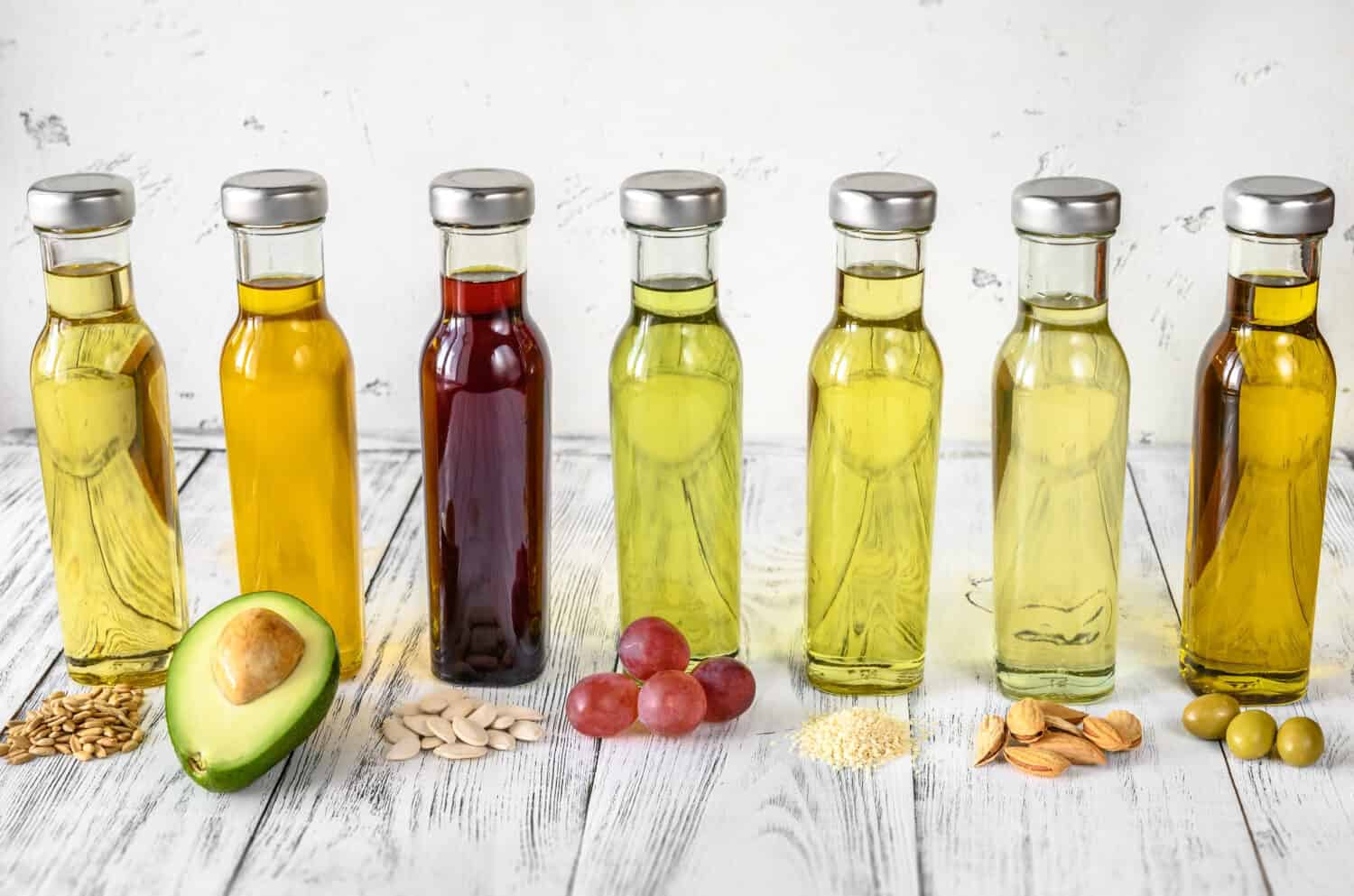If you’ve ever wandered down the cooking oil aisle and felt overwhelmed by the sheer number of choices, you’ve come to the right place. Let’s take corn oil vs. vegetable oil, two perfectly good oils for cooking with. However, there are some inherent differences that are worth knowing. Before you buy either, you should understand that while corn oil is a type of vegetable oil, vegetable oil is also often a mixture of several oils derived from vegetables. So, the two are different in makeup, which causes them to have slightly different smoke points (burning points). They also differ in terms of their nutritional profiles, which we’ll get into more on later.
Read on as we delve into the history and origin of the processes for corn oil vs. vegetable oil. You’ll learn about how these oils have developed over the years, and how to use them best. Get an idea of some recipes that pair well with each, and when they’re interchangeable as well. By the end of this, you’ll be a pro at picking between corn oil vs. vegetable oil, and far less overwhelmed in the cooking oil aisle. So, let’s get into the fun details between these two oils.

Corn Oil vs. Vegetable Oil: What is the difference?
The major differences between corn oil vs. vegetable oil come down to the makeup of the mixture, the burning point of each, and the vitamin/mineral content. Because vegetable oil is often a blend of plant-based processed oils, this in turn affects the burning point properties. This also affects the nutritional makeup of the blend, as opposed to corn oil which is pure processed corn (via Time Magazine).
What is Corn Oil?
Corn oil is a type of vegetable oil that is processed from corn kernels. The kernels are pressed to release the oil and then further chemically processed to neutralize the taste, and smell of the final oil product. Corn oil is used in cooking, and frying, and has commercial uses as well. For instance, corn oil is an ingredient in the creation of a number of cosmetic products (via Healthline).

©iStock.com/al62
History And Origin of Corn Oil
The history of corn oil processing dates back to the late 1890s. It was invented by the same man who derived the recipe for cornstarch. A British immigrant by the name of Thomas Kingsford started the trend of wet milling corn, which allowed for the extraction of oil from the pressed corn germ. Machines for pressing became more common. Specifically, one invented by Theodore and Benjamin Hudnut of Indiana, allowed for corn cooking oil to be more widely available. By the 1960s, corn oil was a staple of the cooking oils, and popular for its low price, high smoke point, and neutral taste (via Spiceography). Corn oil is popular in salad dressings because it can be easily flavored since it's rather neutral to begin with. Its high burn point means it's a great oil for frying, sautéeing, baking, and grilling.
How Is Corn Oil Made?
Corn oil is made from the herm of the corn kernel. Through the process of wet milling, the germ can be separated and further refined. After being dried, the pressing occurs with a hydraulic/screw press which allows for the oil to be properly extracted. This, in turn, goes through several chemical processes that reduce imperfections, and further neutralize the taste of corn oil overall. Corn oil is 100% fat, with vitamins and phytosterols, and a low cholesterol content that can be considered healthy. But it should also be used in moderation. Corn oil can be found in margarine, soaps, ink, cosmetics, paints, and manufactured biodiesel products (via Brittanica).
What is Vegetable Oil?
Vegetable oil technically applies to any oil that is a byproduct of plant-based-pressing. Often, the commercial vegetable oils you will find on the shelf, are a blend of oils including soybean, safflower, palm, canola, and sunflower oils. Other examples of vegetable oil include but are not limited to, almond, argan, avocado, coconut, peanut, lemon, linseed, and cottonseed oil (via Brittanica). Each of these oils may have different modes for processing, some involve breaking, pressing, and the use of heat to extract the oil from the plant source. These, in turn, can affect the nutritional makeup of the oil blend.
History And Origin of Vegetable Oil Processing
Before vegetable oil, cooking oil was derived from animal fat. Fat was also used for cleaning products such as soap. However, with the arrival of various economic depressions, people needed a cooking oil that was more affordable than animal fat. For instance, Procter & Gamble, a soap manufacturer in the late 1890s, began to use a mixture of palm and coconut oil to replace expensive animal fat.
- The must-have convenient reference guide for every home cook!
- Includes more than 8,000 substitutions for ingredients, cookware, and techniques.
- Save time and money on by avoiding trips to grab that "missing" ingredient you don't really need.
From here, the American industrial complex realized they could utilize plant scraps to create cheap cooking oil. The invention of Crisco brought pure vegetable shortening into all kinds of homes, and with some good marketing, the first customers of Crisco received a cookbook outlining everything that could be done with this new form of animal-free cooking fat (via The Atlantic). The earliest forms of commercial vegetable oil came from cotton (cottonseed oil) modern vegetable oil has progressed in lots of ways. Now you can find it in many forms and combinations, just be sure to read the label!

©Quality Stock Arts/Shutterstock.com
Ways To Use Vegetable Oil
Vegetable oil can be used in a number of ways, both in the kitchen and the household. It can be used for cooking, baking, and frying, though its burning point may vary in comparison to corn oil. This depends very much on what kind of vegetable oil you are using. It can be found in Trader Joe's pumpkin bread and used in recipes such as “How To Cook Cod Perfectly, 4 Ways.”
Nutritional Value of Corn Oil vs. Vegetable Oil
As you can see from this handy chart below, when comparing corn oil vs. vegetable oil, it is clear the two are quite comparable. They are also pretty easily substituted for one another. However, while corn oil has a slightly higher burning point, there are some negative health effects to the ways in which it is refined. Corn oil is full of vitamin E and phytosterols which can help in lowering cholesterol. However, it's also full of omega-6 fats, that aren't as highly concentrated in other pure vegetable oils. The nutritional makeup of vegetable oil is very much dependent on the blending of oils present in the mixture. It can be useful to do your research on the health benefits of particular oils to see which will provide the most nutrients.

Corn Oil vs. Vegetable Oil: Are They The Same Thing?
In summary, when comparing corn oil vs. vegetable oil, they are different enough. Corn oil is a type of vegetable oil, it is made from corn. Commercial vegetable oil is a blend of oils extracted from plants. They differ in makeup, burning point, and nutritional profile. However, they are similar enough in taste and application, that they can be substituted for one another in cooking instances.
Possible Alternatives To Corn Oil And/Or Vegetable Oil
There are truly so many different kinds of cooking oil. According to Time Magazine, canola oil has less saturated fats and a high smoke point. Olive oil is a fan favorite and quite full of nutrients and its extra virgin variation is full of antioxidants, anti-inflammatory properties, and other vitamins and minerals. The other pure forms of vegetable oil that are considered healthiest include coconut oil, sesame oil, rapeseed oil, and walnut oil. This is to say, there are a great many alternatives to corn oil and blended vegetable oil.
The image featured at the top of this post is ©Alexander Prokopenko/Shutterstock.com.
- The must-have convenient reference guide for every home cook!
- Includes more than 8,000 substitutions for ingredients, cookware, and techniques.
- Save time and money on by avoiding trips to grab that "missing" ingredient you don't really need.

